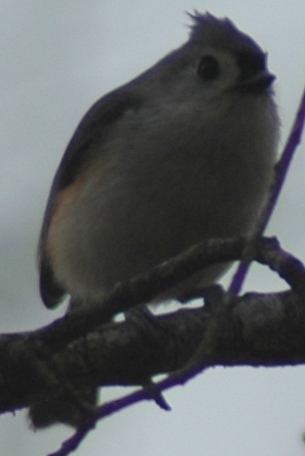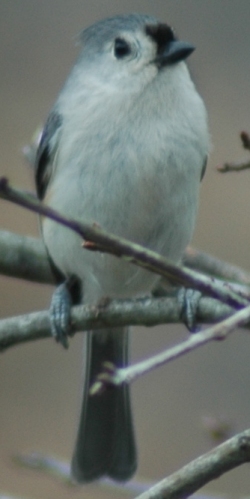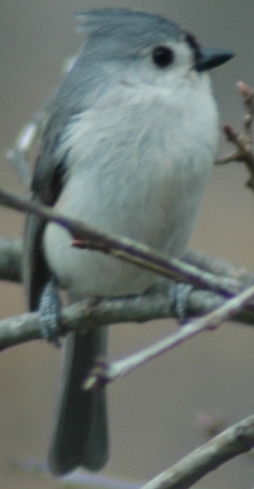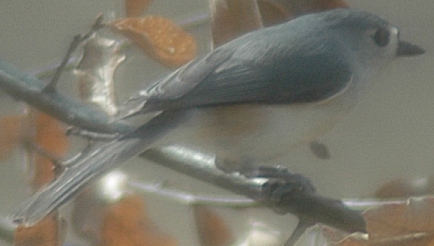Continuing the tribute to the winged ones, today’s focus is on the titmouse. Probably one of the stranger names for a bird since it doesn’t really resemble anything of the things that come to mind when I see that name. I might have to track down the origin of that name out of sheer curiosity. Based on the images in the field guide, I appear to have Tufted Titmouses (or is that Titmice?) which again is common to the region I live in. This first picture is a tad fuzzy and dark, but I thought it was interesting because it looked a tad fat. Due to the poor lighting I am unable to tell if it is browner than gray and thus might be a female.

Based on observation, the titmouse has to be the most skittish of all of the birds that use my feeders. They are very timid and always land on a nearby branch first and survey the situation before eventually diving down into the larger birdfeeder (with songbird mix).
Next to the red-winged blackbird, the titmouse has been the hardest bird to actually photograph because they never stay in one spot very long. Once they land on a branch and observed the surroundings, they dive down to the feeder, snatch up a seed (at this point I have been unable to determine their favorite) and then quickly return to the branch they were just on.

At this point, they appear to crack the shell open against the branch and consume the seed inside and then repeat the process. Unlike the two birds blogged on previously , the titmouse doesn’t show up every day (at least when I am home) and I think only once has it actually been with another titmouse. I have also never seen it attempt to be aggressive with another bird (providing emphasis to my timid assumption). One thing is for sure, he is keeping an eye on me.

Now I need your help. In my titmouse directly, I actually found this image. Originally, I thought it was a titmouse, but as you can probably see, it is missing a key characteristic.

yep, no tuft. I hunted all through my field guide without luck. I even thought it just might have been a juvi or a female, but alas, not luck. I was out bird watching on my lot with my brother Ron sometime back and I think he referred to it as a gray bird. Looks like someone used a more literal naming of the bird as opposed to the featured bird’s name. Can anyone confirm this? … my 1966 field guide does not have a gray bird listed, but a few Google Image queries looked somewhat similar.
…. and yes, there are more bird posts coming.

